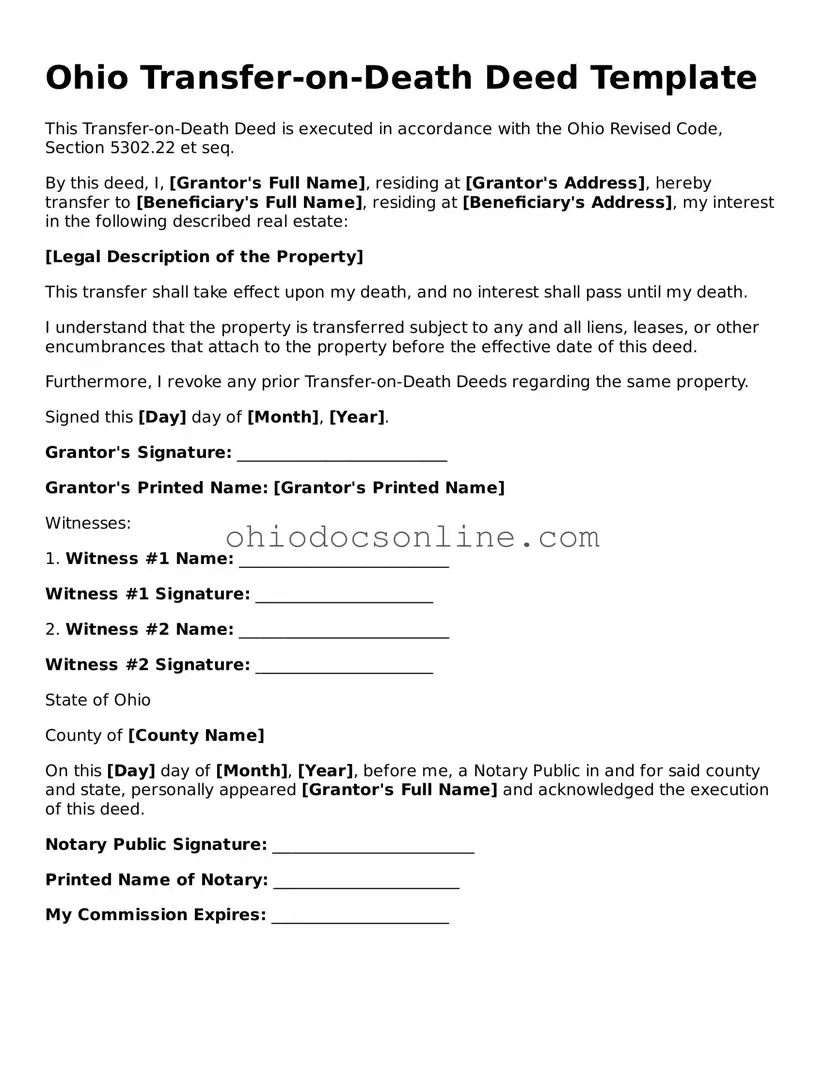Printable Transfer-on-Death Deed Template for Ohio
The Ohio Transfer-on-Death Deed form is a legal document that allows property owners to transfer their real estate to designated beneficiaries upon their death, bypassing the probate process. This form provides a straightforward way to ensure that loved ones inherit property without the complications often associated with estate management. Understanding its use and requirements can help individuals make informed decisions about their estate planning.
Open Editor
